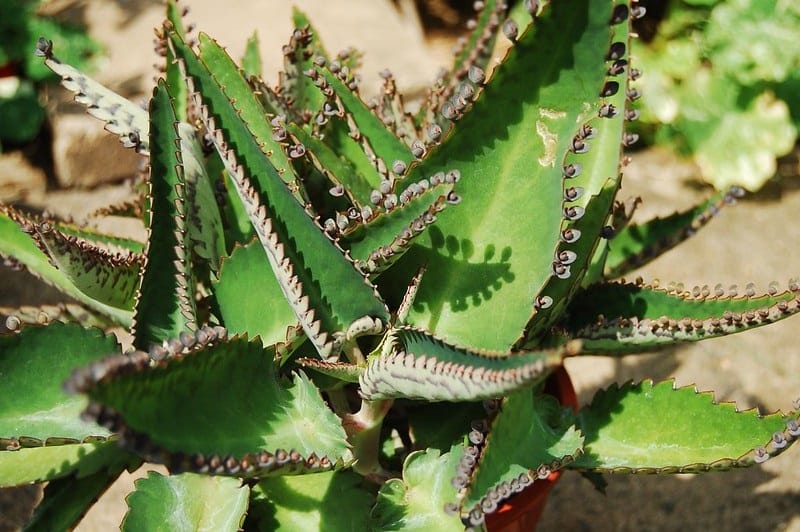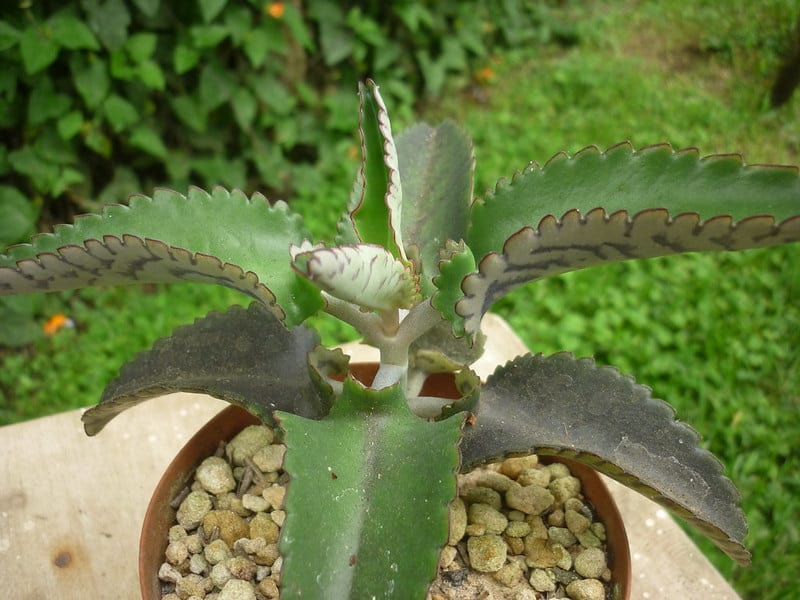Devil’s Backbone Plant: A Potentially Harmful Species?
Imagine having a beautiful plant in your garden that goes by the fascinating name of Mother of Thousands or devil’s backbone. It sounds intriguing, doesn’t it? Well, this ornamental plant is quite popular in tropical gardens around the world. But hold on, if you have adorable pets or little ones roaming around your home, a thought might have crossed your mind: “Is the devil’s backbone plant poisonous?” It’s a valid concern, and in this blog, we’re going to delve into the world of devil’s backbone plant to uncover the truth about its potential toxicity. So, grab a seat, get cozy, and let’s explore this captivating plant together!

Contents
Is the Devil’s Backbone Plant Poisonous to Humans?
The devil’s backbone plant hails all the way from the beautiful African island of Madagascar. It’s not just any ordinary plant, though. Besides being a stunning addition to gardens, it also has some medicinal properties. But hold on tight because there’s more to this plant than meets the eye, and we need to handle it with caution.
Scientifically known as Kalanchoe daigremontiana, devil’s backbone plants belong to a family that contains a substance called bufadienolide. This substance can be toxic if consumed in high doses. Ingesting large amounts of the plant can lead to poisoning, causing symptoms such as muscle contractions and paralysis.
Some research suggests that this substance may have potential in fighting cancer, but scientists are still working to fully understand this connection and gather more evidence.
So, what can the devil’s backbone plant be used for, and how should we use it safely? Let’s find out together!
The Many Uses of Devil’s Backbone Plant

Devil’s backbone is popularly used in treating various ailments such as inflammation, infectious diseases, diarrhea, fever, coughs, and even helps with wound healing. It’s also known to have sedative properties and can be beneficial for people dealing with psychiatric conditions like panic attacks or schizophrenia.
When it comes to fighting cancer, devil’s backbone shows promise due to its powerful cytotoxic properties that attack cancer cells. However, it’s important to note that there isn’t enough scientific evidence yet to confirm this benefit through direct consumption of the plant’s leaves.
How to Use Devil’s Backbone Plant Safely
To enjoy the benefits of devil’s backbone, people often consume its leaves in the form of juices, teas, or even raw in salads. It’s crucial, though, to be mindful of the dosage. It’s recommended not to exceed 30 grams per day to avoid any potential toxic effects on the body.
Traditionally, devil’s backbone leaves are also applied topically to wounds to help speed up the healing process.
Before you start using devil’s backbone as a remedy, it’s vital to consult a doctor. Ensuring you have the correct plant species and obtaining professional guidance is key to avoiding any risks associated with toxic plants.
Potential Side Effects and Contraindications
Using devil’s backbone plant comes with a note of caution. Consuming more than 30 grams per day can lead to poisoning, resulting in muscle contractions and paralysis. Pregnant women should steer clear of this plant as it can interfere with uterine contractions. Additionally, children, as well as individuals with hypoglycemia and low blood pressure, should avoid consuming devil’s backbone.
When used within the recommended daily dose, devil’s backbone is generally considered safe. However, it’s crucial to chat with a doctor before incorporating it into your routine.
Remember, precaution is key when it comes to enjoying the benefits of the devil’s backbone plant. So, let’s stay informed, prioritize safety, and explore the potential this intriguing plant has to offer!
